The development of stronger 3D printing materials has encouraged manufacturers across industries to explore 3D printing instead of CNC machining, and find ways to 3D print functional parts that were previously CNC machined. The 3D printing process can save manufacturers considerable time and money, while still generating the quality necessary for industrial-level production.
Manufacturers that make the switch can leverage 3D printing software to prototype and produce parts in a single day, for a fraction of the cost of traditional CNC machining. However, there are still several key areas where CNC machining may be the right choice.
From physical to financial, let’s walk through some of the key areas to evaluate before deciding between CNC machining and 3D printing.

Physical
Both CNC machining and 3D printing processes are constrained by tool size; in the case of CNC machining, the tool diameter dictates the smallest negative feature that can be created. With the right tools, CNC machines are capable of producing much smoother surfaces than 3D printers. 3D printers are capable of procuring parts for fit and finish, but for parts that require exceptional smoothness for mating with other precision components, CNC machining may be preferable.
Of course, 3D printing and CNC machining are both capable of producing parts in metals and polymers, so the choice of materials will revolve around which process will be more readily available for forming the product you need. The service temperature of a particular metal typically has some relation to its melting temperature. While alloys can typically push the useful range higher, the top caps around 65% of the melting temperature of pure metal.
Economical
If the part is needed immediately, there are no other holdups to the operation if you have a machine. Machines, operators, materials, and workholding available, CNC machining will always be the first choice for an easy and productive operation. If there are more urgent jobs, or the part can wait, 3D printing can usually get you a part in hand the next day, freeing up potentially productive operation time for critical tasks. CNC machining is often capable of removing material much faster than 3D printing can deposit it. Keep in mind that size does not play into the time constraint for CNC machining whereas with 3D printing, the part size greatly affects the time. Obviously, large objects require greater amounts of time to manufacture with a 3D printer. With smaller parts, it can often be faster to 3D print rather than using a CNC machine.
When the costs are broken down for low-volume machined parts, the bulk of the cost comes from the time required for programming and setup; the actual time for cutting metal is generally fairly short. Scaling up production volume can be achieved by making larger setups to cut more parts unattended. As part complexity and the number of features increase, programming time and the number of required setups may also increase. With 3D printing, the programming (slicing) happens in a matter of minutes, and complexity has little effect on the programming time. Scaling up production volume is generally achieved by bringing more machines online.
In conclusion, the case is seldom as simple as a one-to-one process replacement. We often find that, when used in tandem, a CNC milling machine and a 3D printer are a very strong team, as larger parts can be milled, while smaller, more intricate and detailed pieces can be 3D printed. So, the question may not be: Should I purchase a CNC Mill or a 3D printer? You may discover that you’ll want both!
Streamline Automation and our team of project professionals can help you with your machining options. Give us a shout to begin your journey into the world of market production today.



